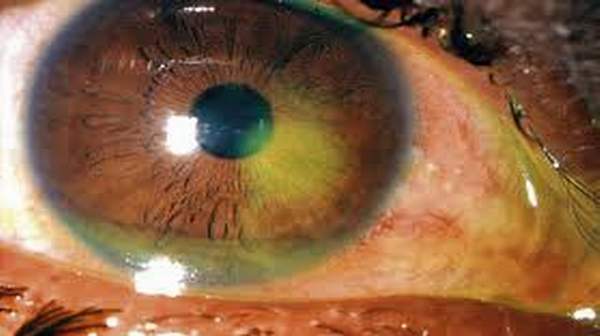What's in this article?
Anaphylaxis Overview
Anaphylaxis (an-a-fi-LAK-sis) is a serious, life-threatening allergic reaction. The most common anaphylactic reactions are to foods, insect stings, medications and latex.
If you are allergic to a substance, your immune system overreacts to this allergen by releasing chemicals that cause allergy symptoms. Typically, these bothersome symptoms occur in one location of the body. However, some people are susceptible to a much more serious anaphylactic reaction. This reaction typically affects more than one part of the body at the same time.
Anaphylaxis requires immediate medical treatment, including an injection of epinephrine and a trip to a hospital emergency room. If it isn’t treated properly, anaphylaxis can be fatal.
Certain people are more at risk of anaphylaxis. If you have allergies or asthma and have a family history of anaphylaxis, your risk is higher. And, if you’ve experienced anaphylaxis your risk of having another anaphylactic reaction is increased.
Causes of Anaphylaxis
Anaphylaxis is a severe, whole-body allergic reaction to a chemical that has become an allergen. An allergen is a substance that can cause an allergic reaction.
After being exposed to a substance such as bee sting venom, the person’s immune system becomes sensitized to it. When the person is exposed to that allergen again, an allergic reaction may occur. Anaphylaxis happens quickly after the exposure. The condition is severe and involves the whole body.
Tissues in different parts of the body release histamine and other substances. This causes the airways to tighten and leads to other symptoms.
Some drugs (morphine, x-ray dye, aspirin, and others) may cause an anaphylactic-like reaction (anaphylactoid reaction) when people are first exposed to them. These reactions are not the same as the immune system response that occurs with true anaphylaxis. But, the symptoms, risk of complications, and treatment are the same for both types of reactions.
Anaphylaxis can occur in response to any allergen. Common causes include:
- Drug allergies
- Food allergies
- Insect bites/stings
Pollen and other inhaled allergens rarely cause anaphylaxis. Some people have an anaphylactic reaction with no known cause.
Anaphylaxis is life-threatening and can occur at any time. Risks include a history of any type of allergic reaction.
Symptoms of Anaphylaxis
Anaphylaxis symptoms occur suddenly and can progress quickly. The early symptoms may be mild, such as a runny nose, a skin rash or a “strange feeling.” These symptoms can quickly lead to more serious problems, including:
- Trouble breathing
- Hives or swelling
- Tightness of the throat
- Hoarse voice
- Nausea
- Vomiting
- Abdominal pain
- Diarrhea
- Dizziness
- Fainting
- Low blood pressure
- Rapid heart beat
- Feeling of doom
- Cardiac arrest
People who have had a severe allergic reaction are at risk for future reactions. Even if your first reaction is mild, future reactions might be more severe. That’s why it’s important to carry self-injectable epinephrine if you are at risk, and 911 should be dialed in the event of a very serious reaction.
Understanding anaphylaxis and the things that can trigger this severe allergic reaction will help you manage your condition.
Anaphylaxis Risk Factor
There aren’t many known risk factors for anaphylaxis, but some things that may increase your risk include:
- A personal history of anaphylaxis. If you’ve experienced anaphylaxis once, your risk of having this serious reaction increases. Future reactions may be more severe than the first reaction.
- Allergies or asthma. People who have either condition are at increased risk of having anaphylaxis.
- A family history. If you have family members who’ve experienced exercise-induced anaphylaxis, your risk of developing this type of anaphylaxis is higher than it is for someone without a family history.
How Can I Be Prepared for Anaphylaxis?
If you are allergic to bee stings or any other substances that cause anaphylaxis, you should always be prepared. Ask your doctor to prescribe an epinephrine injection kit and carry two with you at all times. It is also important to note that avoidance is the foundation and first step to preventing allergic reactions. Be sure to educate yourself on how to recognize and avoid potential triggers.
Also, it’s important that you inform your health care provider of any drug allergies before undergoing any type of medical treatment, including dental care.
It is also a good idea to wear a medical alert bracelet or pendant, or carry a card that identifies your allergy. In cases of emergency, it could save your life.
What Is the Treatment for Anaphylaxis?
There is only one rapidly effective treatment for anaphylaxis epinephrine by injection. Epinephrine is adrenaline and it rapidly reverses anaphylactic symptoms. It is typically given through an automatic injection device. The most common and most effective injection site is the thigh.
Do not hesitate to administer the injection, even if you are not sure that the symptoms are allergy related.
If you are near someone who is going into anaphylactic shock, call for professional medical help immediately. CPR and other lifesaving measures may be required.
In addition to epinephrine, treatment for shock includes intravenous fluids and medicines that support the actions of the heart and circulatory system. After a person in shock is stabilized, antihistamines and steroids may be given to further reduce symptoms.







